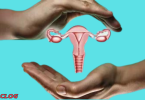Estrogen is one of the most important female hormones, but for some reasons it can exceed the normal level. What are the symptoms of high estrogen?
In fact, estrogen is present in both men and women, but it plays the main role in shaping and regulating the functioning of the female reproductive system. It is secreted in greater quantities by the ovaries, but it can also be secreted by the adrenal glands in both sexes.
Here are the most important symptoms of high estrogen:
Symptoms of high estrogen
We will review the most important symptoms resulting from high estrogen as follows:
- Symptoms of high estrogen in women
Estrogen can be high in women for several reasons, including taking certain medications, obesity, liver disease, and ovarian cancer.
Here are some symptoms of high estrogen in women:
Weight gain, especially in the pelvic and buttocks area.
Swelling and pain in the breast, or the appearance of fibrous masses.
Menstrual disorders with heavy bleeding.
Increased severity of menstrual symptoms.
- Mood swings between stress or depression sometimes.
Panic attacks.
Decreased sexual desire.
Severe headache or migraine.
Hair loss.
Cold extremities due to the effect of estrogen on blood flow to them.
Memory problems.
General fatigue and insomnia.
Feeling of bloating in the stomach.
Uterine fibroids.
- Symptoms of high estrogen in men
As mentioned earlier, although estrogen is an important and essential hormone for women, a man’s body also produces estrogen.
When hormonal problems occur in men, their estrogen levels may rise, which may cause the following symptoms:
Infertility: High estrogen levels can affect sperm health, leading to infertility and reproductive problems.
Gynecomastia: When estrogen increases in men, it can lead to increased breast size.
Erectile dysfunction: High estrogen levels in men can affect erection and thus lead to impotence.
Complications of high estrogen
The cause of high estrogen levels must be determined and the problem solved. Because high estrogen levels for a long time can increase the risk of the following complications:
Thyroid diseases.
Clots.
Brain attack.
heart attack.
breast cancer.
ovarian cancer.
Endometrial cancer.
Some studies have also shown that men may show signs of depression if estrogen rises above the normal level.
This study was conducted in 2018 on 4,000 men and found a relationship between high levels of estradiol, a form of estrogen, in the body and the appearance of signs and symptoms of depression in them.
Normal estrogen level
After identifying the symptoms of high estrogen, the percentage of estrogen in the body is measured by measuring one of its three forms, which include estradiol, estrone, or estradiol.
The normal level of estradiol is:
Classification: Normal estradiol level
Premenopausal women 15 – 350 pg/ml
Postmenopausal women: less than 10 pg/ml
Men 10 – 40 pg/ml







